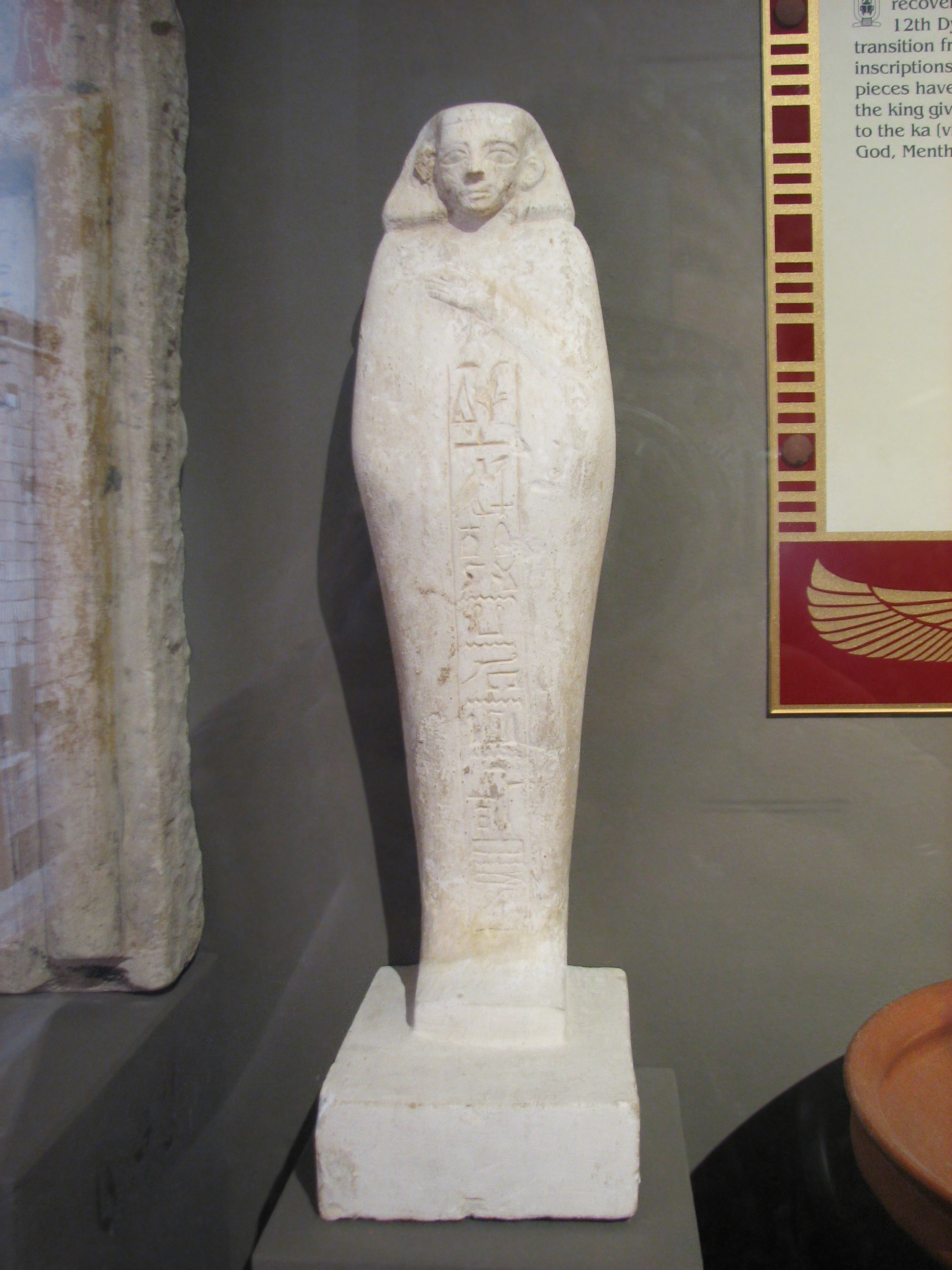 Statue of Mentuhotep
Statue of MentuhotepMiddle Kingdom
Balboa Park Museum of Man #14932
Photo ©Joan Ann Lansberry, 2016
 Statue of Mentuhotep
Statue of MentuhotepMiddle Kingdom Balboa Park Museum of Man #14932 Photo ©Joan Ann Lansberry, 2016 |
|
The corner of an info card (in the top right of this photo) teased with a word "Menth...". Perhaps this piece referred to Mentuhotep. I found an article "Stumbling Upon Mentuhotep, Overseer of the Granaries" by KMJohnston that revealed the rest. Johnston gave link to “The Cemeteries of Abydos: Work of the Season 1925-26” (Egyptian Exploration Society) by H. Frankfort, The Journal of Egyptian Archaeology, Vol. 14, No. 3/4 (Nov., 1928). I was curious enough, so I paid the ten bucks to see the article to which Johnston referred. This statue and several stelae were found lying in the drifted sand or taken for paving stones in later tombs. Frankfort deems that statue and this related stela, also at the the San Diego museum, to be from the Middle Kingdom. Both the statue and the stela refer to a man named Mentuhotep. Their inscriptions are very similar. Combining the Frankfort and Johnston translations, we have for the stela:
"An offering which the king gives, a thousand of bread and beer, of cattle and fowl, to the Ka of the Overseer of the Granary, Mentuhotep, born of Wia (Uya)(triumphant?)". The statue doesn't speak of his parent, but expands his job title to "the Overseer of the Granary of the God’s Offerings".
Frankfort says of the statue:
The Met museum has a Middle Kingdom statue of a standing man in a shroud, and while the position of his left hand is the same to the San Diego statue, the Met museum's figure has his feet ready to run, and he lacks writing on the front:
Wikipedia has a photo of a early shabti shaped like a naked, standing man, in wax, from the 11th dynasty (circa 2050 BCE), Middle Kingdom, at the Munich, Staatliches Museum Ägyptischer Kunst, ÄS 6085. This wax figure has very little in common with the more familiar New Kingdom era shabtis. So we can see the Middle Kingdom San Diego statue of Mentuhotep is definitely a prototype for that more familiar shape.
|


